November 26, 2023
Sometimes, you trip upon a magical space and relish in its uniqueness. I am at Nashima for the second time because I was unable to get to the island of Inujima on my previous trip.
I am so glad I returned. It was worth it just to explore this amazing project.
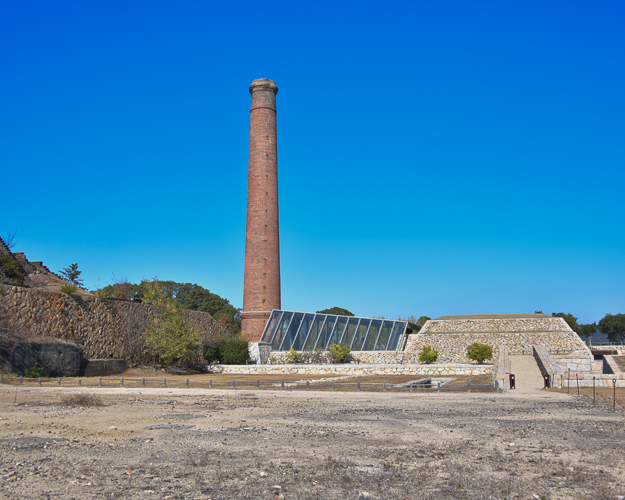
The museum (above) is a tribute to Japanese writer Yukio Mishima (1925-1970), who famously attempted a coup d’état in post-war Japan and committed seppuku immediately upon its failure.
In 1995, artist Yukinori Yanagi envisioned revitalizing the island with contemporary art. In April of 2008, Yanagi, collaborating with the architect Hiroshi Sambuichi, launched the project Seirensho (refinery). The building is a collaboration of architecture and science. The intent was a regional revitalization through the reuse of the island’s industrial heritage. The museum was built based on the concept of ‘using what exists to create what is to be’.
There are no photographs allowed in the museum, which is an amazing spatial experience and one of beauty, wonder, and education. The following two photos are from the internet.
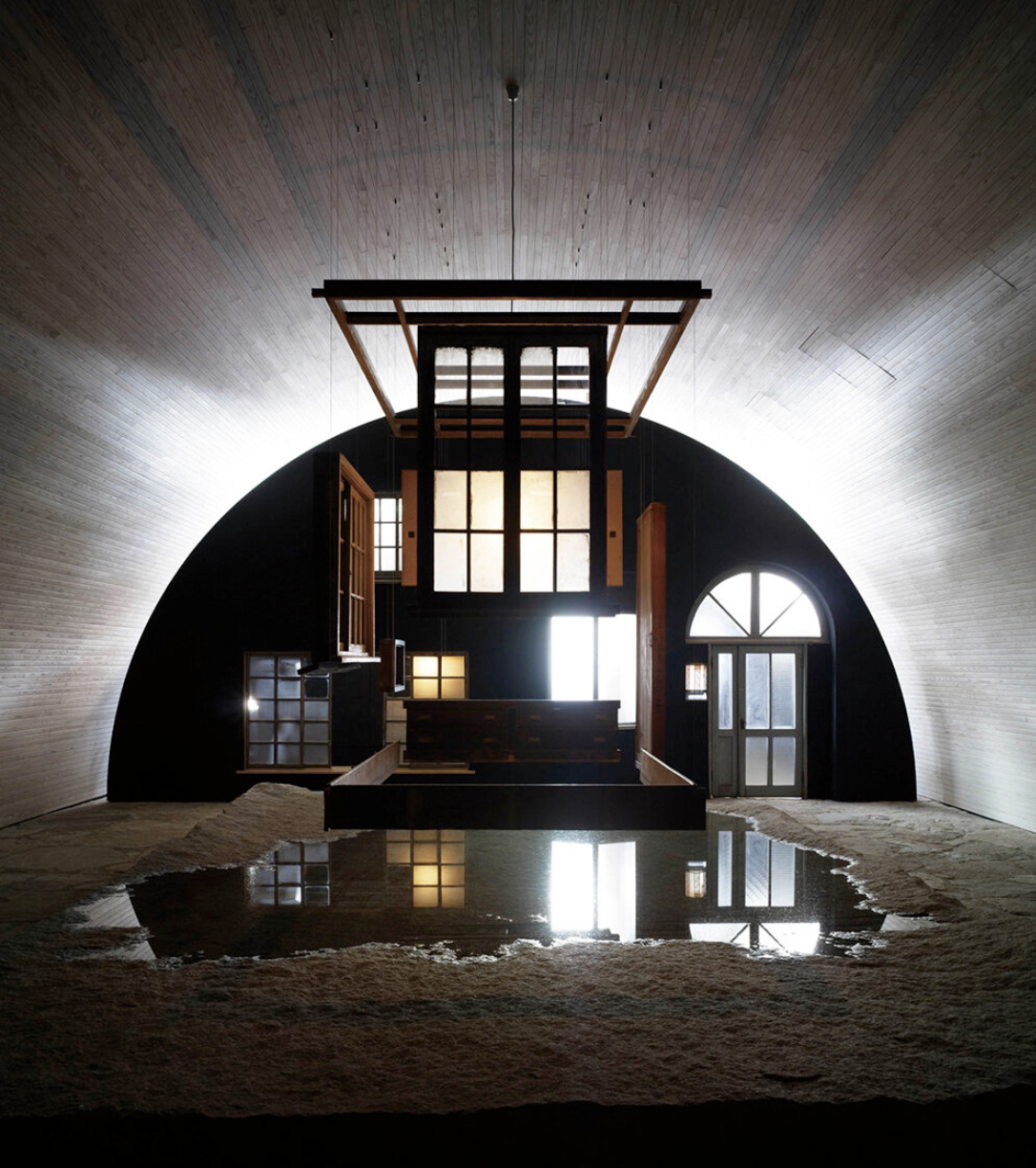
This photo is from the Benesse Art Site. Here is a description from the book I bought about the museum: There is a narrow opening between the dark semi-circular wall and the side wall. A water pool on a huge rock placed in the center of the room reflects the light. The circular light is intended to evoke the image of a total eclipse. The wood fittings and building parts were from Yukio Mishima’s dismantled house. The room that appears to be floating above the rock represents his private, three-tatami mat room.
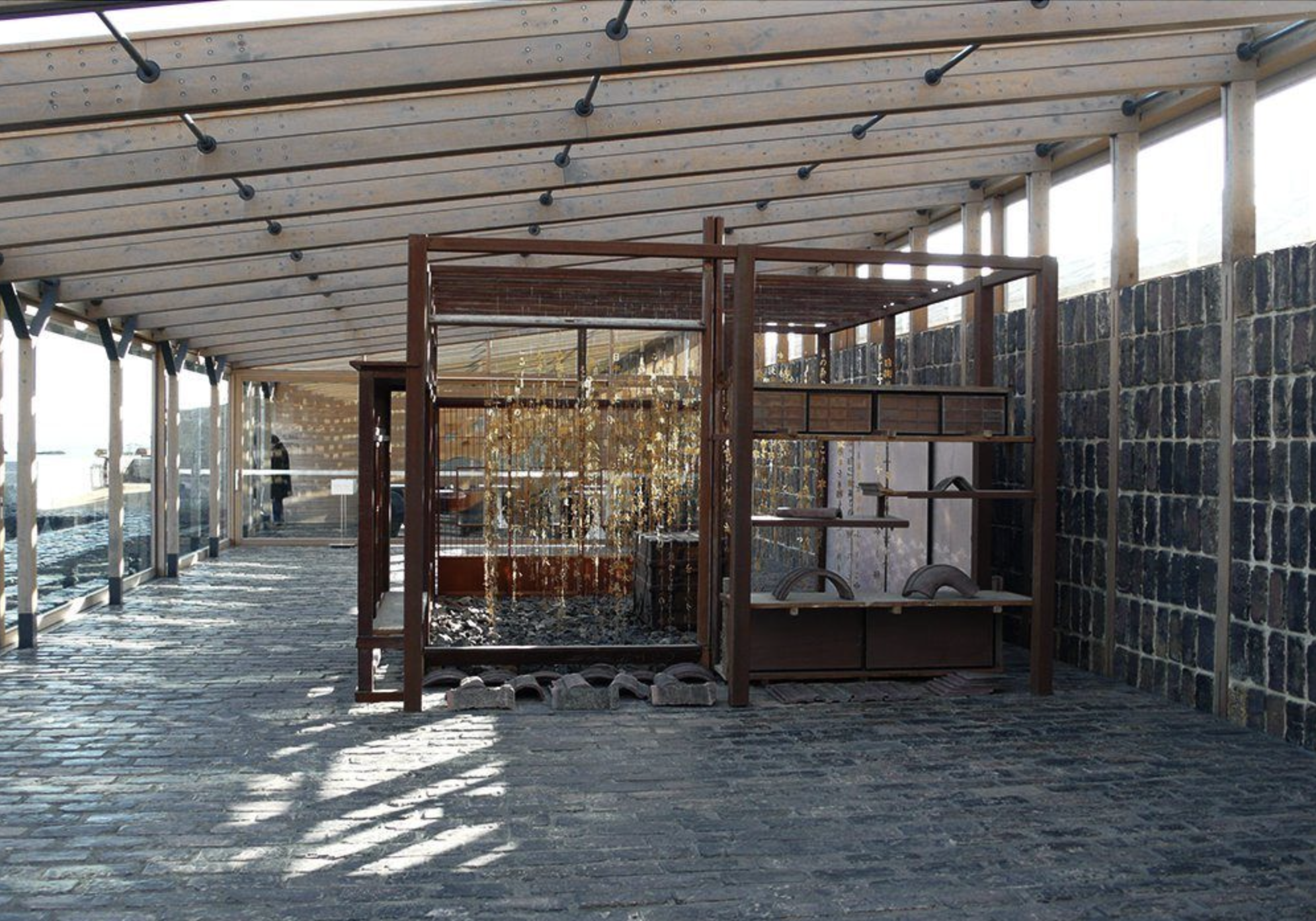
This room is more exquisite than it appears in the photo. In the middle of the space stands a structure made of fittings from the second-floor eight-tatami room of Mishimas’s house. Chains of golden letters are suspended from the beams. Placed in the middle of the structure is a travel trunk. The artist Yanagi mentions Pandora when describing this work. Pandora opened the box, and only hope remained when the box was closed again. The suitcase, once owned by Mishima, now remains closed.
These are just two of the truly lovely portions of the museum.
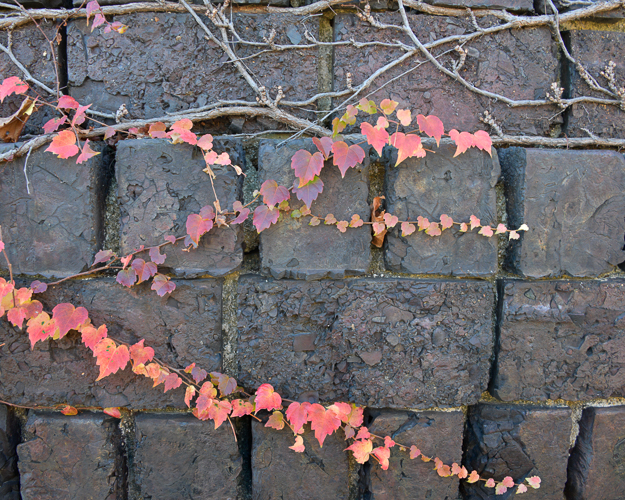
What is also just spectacular is the site itself. The island had a history of quarrying granite that was used in the area’s feudal castles.

A temple on the island utilizing the granite quarried on the island
In 1909, a copper refinery was built on the island, but it lasted only ten years due to a sudden fall in the price of copper and various changes in the economy. The factory has sat idle, untouched, and crumbling ever since. This is probably more understandable when you know that the population of the island in 2017 was a mere 47 people.
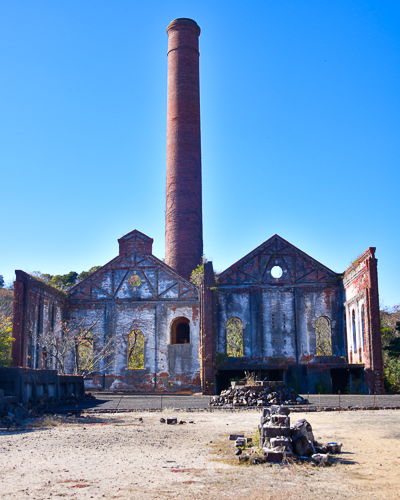
*
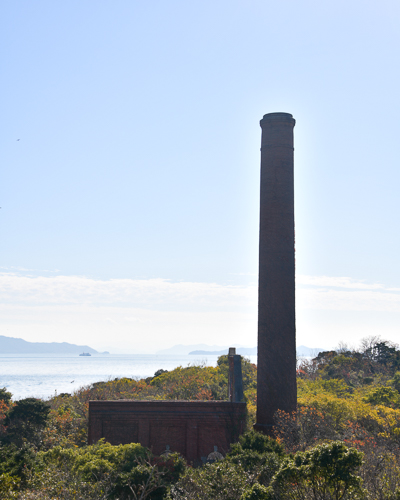
I personally could not get enough of the Karami brick, a by-product of the refining process. It feels like the entire original copper smelting operation was built of this brick. There are millions of these bricks, but no history that I could find about the copper operation itself and how so much of the operation was built with these slag bricks.
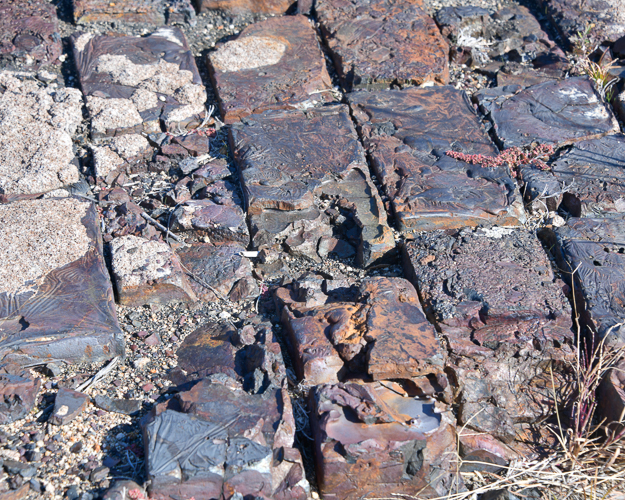
17,000 of the bricks were recycled into the building of the museum.
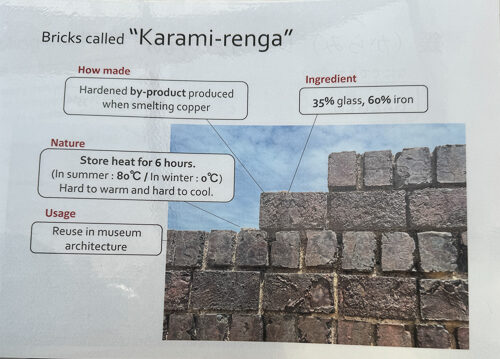
The above and below are from a small educational space/bookstore at the end of the art exhibit.
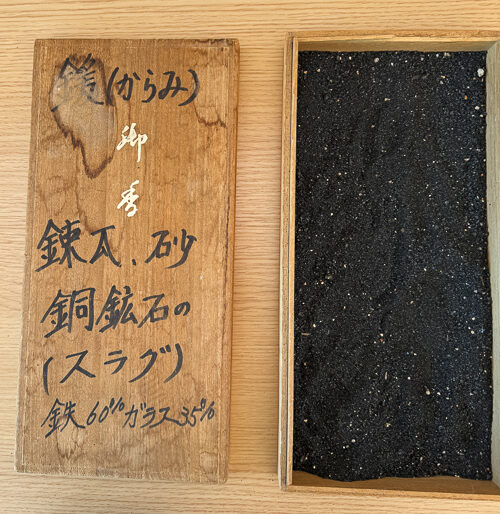
*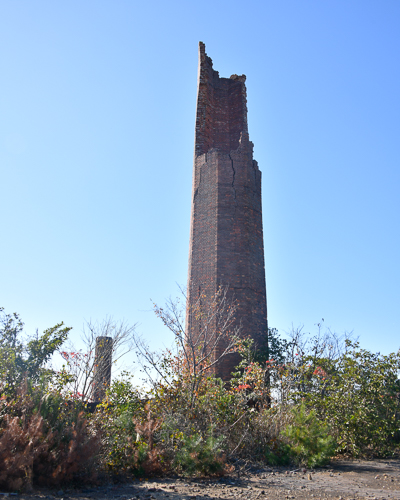
*
What you walk away from after spending time here is that modernization is not necessarily synonymous with high-tech solutions.